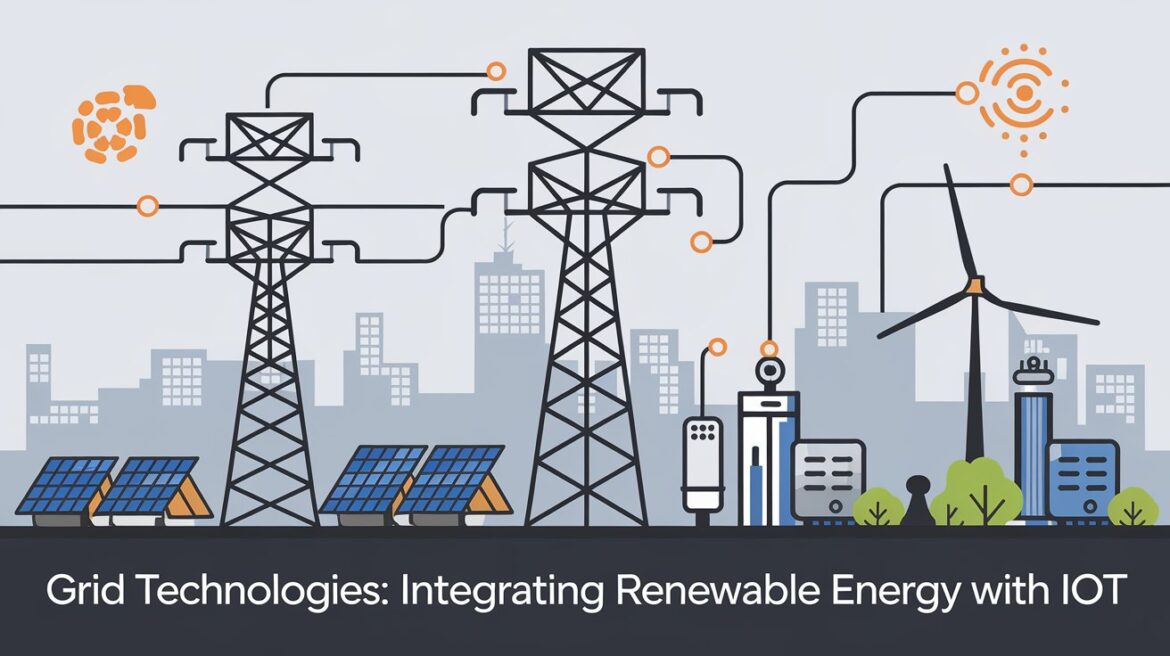The energy sector is undergoing a significant transformation as traditional power grids evolve into smart grids—networks that intelligently integrate renewable energy sources with advanced communication and control systems. At the heart of this evolution lies the Internet of Things (IoT), which enables real-time monitoring, data analytics, and automated decision-making. In this post, we explore how smart grid IoT is driving the integration of renewable energy, enhancing grid efficiency, and paving the way for a sustainable energy future.
What is a Smart Grid?
A smart grid is an electricity network that uses digital communications technology to detect and react to local changes in usage. By integrating IoT devices—such as smart meters, sensors, and connected devices—the grid becomes capable of:
- Real-Time Monitoring: Tracking energy consumption, production, and distribution in real time.
- Automated Control: Adjusting power flows dynamically to balance supply and demand.
- Enhanced Reliability: Detecting faults or outages rapidly to improve overall grid stability.
When combined with renewable energy sources like solar and wind, smart grids facilitate the seamless integration of distributed energy resources into the main power supply.
The Role of IoT in Smart Grids
IoT is a critical enabler for smart grid technologies, providing the tools and data needed to manage a modern energy network:
- Advanced Sensing: IoT sensors continuously collect data on energy production from renewable sources, weather conditions, and grid performance.
- Data Analytics: Cloud-based platforms and edge computing analyze this data to optimize energy distribution, predict maintenance needs, and enhance overall grid efficiency.
- Communication Networks: Reliable, low-latency connectivity between devices ensures that information flows seamlessly, enabling rapid decision-making and automated control.
- Demand Response: Real-time data from smart appliances and electric vehicles allows the grid to adjust loads dynamically, reducing peak demand and minimizing energy waste.
Benefits of Integrating Renewable Energy with IoT
1. Enhanced Efficiency and Sustainability
- Optimized Energy Distribution: Real-time analytics enable utilities to balance supply and demand, reducing energy losses and improving overall efficiency.
- Increased Renewable Adoption: IoT enables smoother integration of variable renewable energy sources, helping to reduce reliance on fossil fuels.
2. Improved Grid Reliability and Resilience
- Fault Detection and Response: Continuous monitoring helps identify issues before they escalate, ensuring rapid response and minimizing outages.
- Decentralized Control: Distributed sensors and smart devices allow for localized energy management, reducing the impact of regional disruptions.
3. Empowered Consumers and Demand Management
- Smart Metering: Consumers gain visibility into their energy consumption, enabling more informed decisions and participation in demand response programs.
- Personalized Energy Services: Utilities can offer tailored energy plans and incentives based on real-time usage data, fostering greater customer engagement.
Challenges and Considerations
While the integration of IoT in smart grids offers substantial benefits, there are challenges to address:
- Cybersecurity: With increased connectivity, ensuring robust security protocols is critical to prevent unauthorized access and data breaches.
- Interoperability: Integrating diverse devices and systems from multiple vendors requires standardization and seamless communication protocols.
- Data Management: The vast amounts of data generated by IoT sensors need effective storage, processing, and analysis solutions.
- Initial Investment: Upgrading legacy infrastructure to support smart grid capabilities may require significant upfront capital.
Future Trends in Smart Grid IoT
Looking ahead, several trends are set to further enhance the capabilities of smart grids:
- Edge Computing: By processing data closer to the source, edge computing will reduce latency and improve the responsiveness of smart grid applications.
- Artificial Intelligence: AI-driven analytics will further optimize energy distribution, predict equipment failures, and personalize demand response strategies.
- Blockchain for Energy Trading: Distributed ledger technologies could enable secure, decentralized energy trading platforms, empowering prosumers to buy and sell energy directly.
- 5G and Beyond: Advanced wireless connectivity will enhance the reliability and speed of data transmission across smart grids, facilitating even more sophisticated IoT applications.
Integrating renewable energy with IoT in smart grid technologies is revolutionizing the energy sector. By enabling real-time monitoring, automated control, and data-driven decision-making, smart grid IoT solutions are enhancing efficiency, reliability, and sustainability. Although challenges such as cybersecurity and interoperability remain, the ongoing advancements in edge computing, AI, and 5G promise a bright, interconnected future for energy management.
